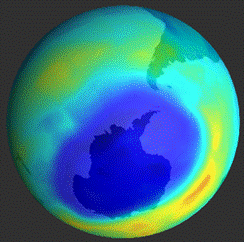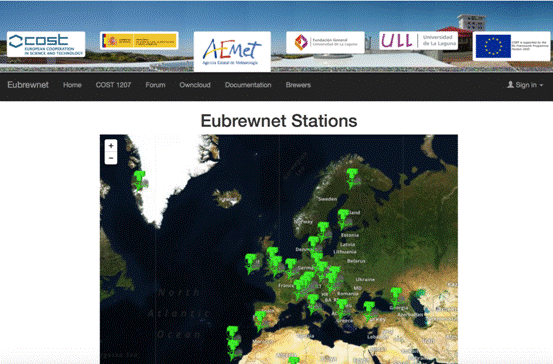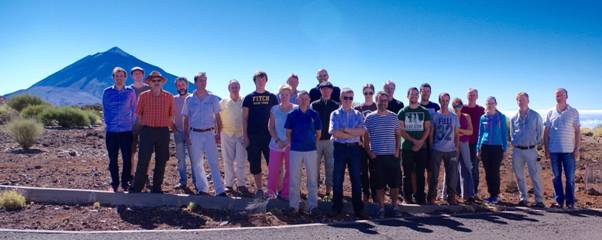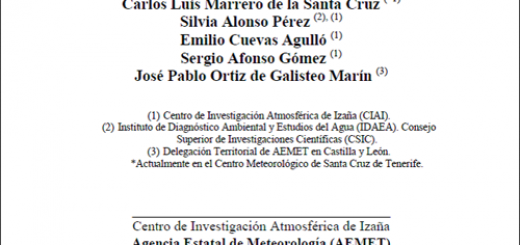International Day for the Preservation of the Ozone Layer on 16 September 2016 with the slogan: “Working towards reducing global-warming HFCs under the Montreal Protocol”.

The International Ozone Commission released a press note in commemoration of the International Ozone Day (here the full version ), summarizing the state of the ozone layer:
The United Nations has declared the 16th of September as the International Day for the Preservation of the Ozone Layer to commemorate the 1987 signing of the Montreal Protocol on Substances that Deplete the Ozone Layer. The 1985 Vienna Convention was the framework agreement under which the Montreal Protocol was negotiated. It is an outstanding example of a successful collaboration between scientists, governments, non-government organizations, and industry to control the production and consumption of ozone-depleting substances. After the adoption of the agreement the ozone layer stopped decreasing in the late 1990-s and have stabilized to the levers about 2-3% less than observed in 1980. The last international assessment of stratospheric ozone published by WMO in 2014, has reported a small but statistically significant increase of ozone around 40 km, which has been attributed to both a decrease of ODSs and the cooling of the stratosphere by increased abundance of greenhouse gases. More recently, several studies have shown early signs that total ozone may be starting to recover over Antarctica. Due to the long lifetimes of ODSs in the atmosphere, full stratospheric ozone recovery will take several decades. Stratospheric ozone recovery will also be impacted by climate change.
An important achievement of the Montreal Protocol has been the successful reduction of the global production, consumption, and emissions of ozone-depleting substances (ODSs). Atmospheric observations have shown that total chlorine from these ODSs is declining. Most of these ODSs are also potent greenhouse gases. The ODS contribution to global warming and climate change would have been much larger without the Montreal Protocol. The climate protection already achieved by the Montreal Protocol could be further improved by managing the emissions of substitute hydrofluorocarbon (HFC) gases with high global warming potentials and/or implementing alternative gases with lower global warming potentials. With the increases projected for HFCs, these chemicals could potentially contribute to 25% of additional global warming beyond the stabilization target of 450 ppm for CO2 (today: 400 ppm).
Our ability to follow future ozone levels is crucially dependent on satellite, balloon, and ground-based ozone observing systems. The maintenance and continuation of ozone observations is necessary for improving our scientific understanding of interactions between climate change and ozone depletion, for measuring the ongoing recovery impact of the Montreal Protocol, and for observing the ozone layer under changing climate conditions. The International Ozone Commission (IO3C) of IAMAS-IUGG urges national and international agencies to continue their support of measurements of ozone and related species, in order to understand and observe the evolution of atmospheric ozone over the 21st century.
The Spanish State Meteorological Agency (AEMET) provides the European reference for the ozone observations with the triad of the Regional Brewer Calibration Center hosted at Izaña Atmospheric Research Centre (IARC) , and maintains an important ground-based ozone monitoring network in Spain. AEMET also co-leads the EUBREWNET European COST action, which aims to facilitate consistent ozone, spectral ultraviolet and aerosol optical thickness provided by Brewer spectrophotometers installed in Europe. In the EUBREWNET project, 18 European countries, United States, Canada and Australia are involved plus international organizations such as WMO and ESA. The project database has been developed and hosted at AEMET, where all ozone observations are centrally received and processed in real time.
During this Ozone Day an international campaign of the ATMOZ project (Traceability for atmospheric total column ozone) is being celebrated at the Izaña Atmospheric Observatory. During three weeks scientist of 10 countries are comparing their ozone measurements using RBCC-E as a reference. The CIAI participants on the ATMOZ project are in collaboration with the la Laguna University.

Screenshot of the EUBREWNET web page showing the instrument who are sending observations in real-time.

Group photo of the participants on the ATMOZ campaign at the Izaña Atmospheric Research Centre on September 15th, 2016.
To know more:
The international Ozone Commision press release
https://ioc.atmos.illinois.edu/press/IO3C%20Press%20Release%20-%202016_final.pdf
The Montreal Protocol and the Human Health (http://www.unep.fr/ozonaction/information/mmcfiles/7738-e-TheMontrealProtocolandHumanHealth.pdf
ENVIRONMENTAL EFFECTS OF OZONE DEPLETION AND ITS INTERACTIONS WITH CLIMATE CHANGE: 2014 ASSESSMENT (http://ozone.unep.org/Assessment_Panels/EEAP/eeap_report_2014.pdf)
Scientific Assessment of Ozone Depletion: 2014 (https://www.wmo.int/pages/prog/arep/gaw/ozone_2014/documents/Full_report_2014_Ozone_Assessment.pdf)
Estado de la capa de ozono, resumen del informe 2014
https://speakerdeck.com/aredondas/el-estado-de-la-capa-de-ozono-dia-del-ozono-2014







